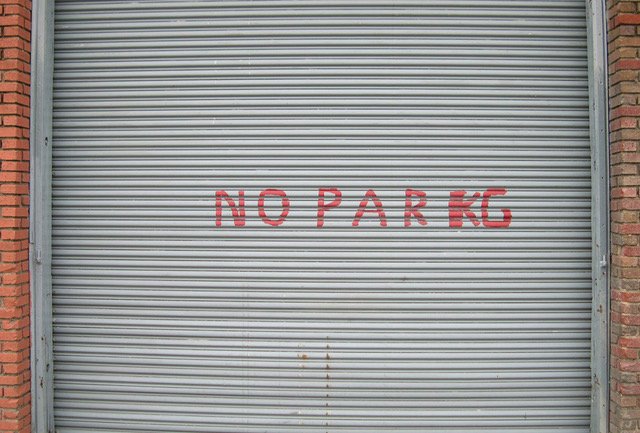THINK AHEAD
One afternoon I noticed a gray metal garage door with the letters, NO PARIKG, painted in bold, red, block letters, across its surface. The red block letters appeared clearly except for the last half of the second word, where the letters appeared confusing. It seemed to me that by the time the sign painter had painted NO and PAR the painter probably noticed they would run out of room. The first sequence of choices established the letter’s size-shape and spacing. That initial choice seemed to require a continuation of the same size-shape and spacing. But there was no room.
The painter changed the pattern, painting the letters I, K on top of one another and the G adjacent. The letters KING are missing, but the sign seems finished. It looks wrong but it will do. To get the “no parking” sign correct, the sign painter would have to repaint the garage door or wipe out the letters and start over, always an option. If the sign painter started again, since the first choice determines the outcome, the first letter could go farther to the left, to make room for both words: “No Parking.” Or the painter could change both the size and the position of the first choice, or subsequent choices, using larger and smaller letters.
The NO PARIKG sign works because of Gestalt part-whole laws as well. There are enough cues—the letters and spacing NO PAR—for the viewer to complete the phrase, even though the final parts are incorrect. Also, the red letters are written on a garage door. Context influences conclusions. The influence of the ground on the part could not be better illustrated. Ground forms figure.
“Make a mark and watch what happens,” is a good rule of thumb for an artist to follow. Beyond that, STUDIO SEEING recommends the Great Law: “Instead of focusing on the mark you just made, and trying to ‘correct’ it, look for the next mark.” That is the Great Law.
NOTES:
For more about Gestalt principles, new realizations, and the Great Law, see STUDIO SEEING.
